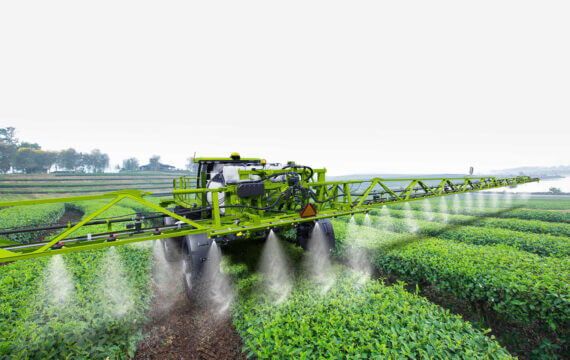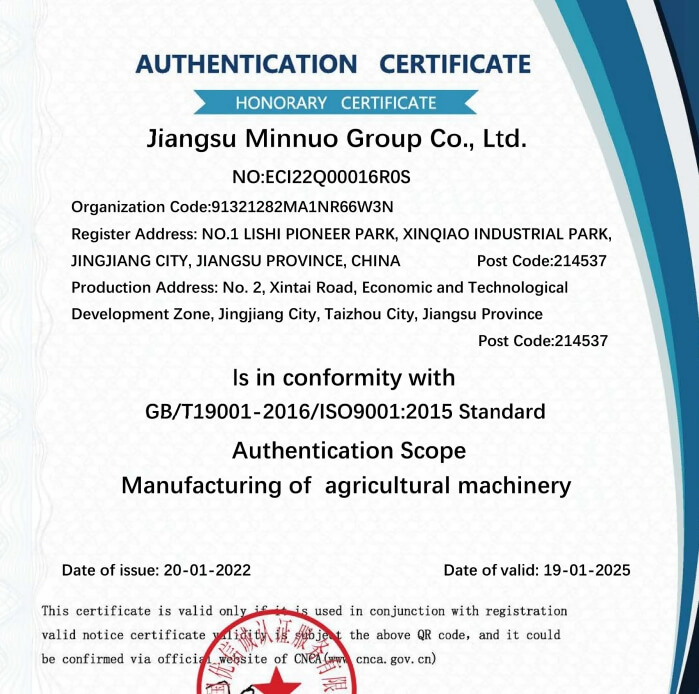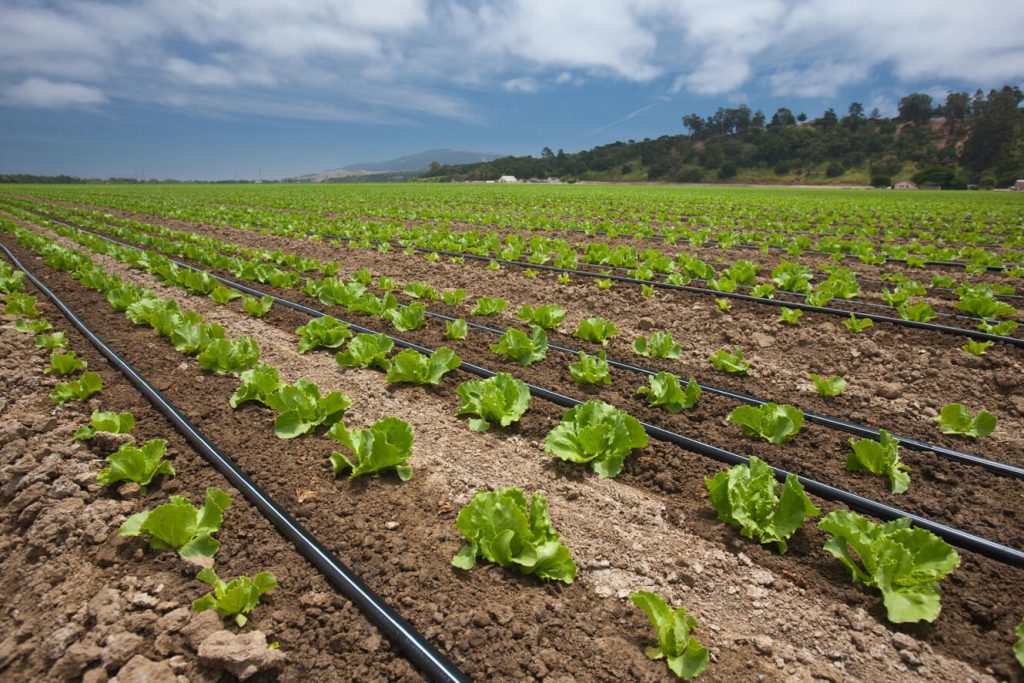In recent years, agriculture around the world, from Spain to California, has been confronted with an increasingly grim reality: droughts are not only more frequent and longer-lasting, they also have a direct impact on crop output and irrigation costs. According to mainstream media outlets such as the BBC and CNN, Spain’s agricultural water use will be forced to be cut by 40% by 2023, and according to the Food and Agriculture Organization of the United Nations (FAO), drought is costing the world’s agriculture up to $30 billion a year.
The crisis is not only a “natural pressure”, but also a “policy push”: under new EU regulations, farms that fail to meet water-saving certification standards or install precision irrigation systems will be fined up to €15,000, and their eligibility for agricultural subsidies will be affected. This puts farmers in a dilemma – if they don’t retrofit, they won’t be able to irrigate; if they do retrofit, they’re worried about the cost and difficulty of doing so.
So, is there a scientific, practical and sustainable way to combat drought? This article will take you step by step to dismantle the core principles, return on investment, technology selection and implementation path of the “smart irrigation system”, to help farmers in the drought season to keep water, and even more to keep the harvest. Read on to get your drought upgrade guide and practical solutions.
Contents
- 1 1. Technology dismantling: Minnuo intelligent irrigation system how to scientific “lock water”.
- 1.1 1.1 Soil precision sensing network: dynamic control of the root zone
- 1.2 1.2 Pressure-compensated irrigation strategy: anti-seepage without waterlogging, adapting to the terrain
- 1.3 1.3 Intelligent Decision Module: AI algorithm for precise irrigation
- 1.4 1.4 Mobile Remote Operation and Maintenance: Autonomous diagnosis within 30 minutes.
- 2 2. Quantification of value: the transformation path from “saving water” to “making money”
- 2.1 2.1 Water-saving benefits: the same water use, higher effect
- 2.2 2.2 Saving water means increasing income: Yield and quality are both improved.
- 2.3 2.3 O&M savings: labor + fertilizer + maintenance is more worrying.
- 2.4 2.4 Favorable policies and certificates: help fast financing and government subsidy application
- 3 3.Decision-making tools: How much input does your farm need? How long does it take to pay back?
- 3.1 3.1 ROI online calculator: three steps to get the investment measurement
- 3.2 3.2 Critical Scenario Recommendations for Fast Payback
- 3.3 3.3 User case reference (real data simulation)
- 4 Conclusion
1. Technology dismantling: Minnuo intelligent irrigation system how to scientific “lock water”.
In today’s agricultural “quality and efficiency” trend, the irrigation system is no longer a single pump or pipe network equipment, but a data-centered, algorithm-driven intelligent water-saving decision-making system. Minnuo intelligent irrigation system is based on “precise water use + intelligent control” as the core to create efficient and sustainable water saving solutions.
1.1 Soil precision sensing network: dynamic control of the root zone
Deep sensing of soil water content: sensors are deployed at a depth of 10-100cm, accurately covering the active layer of the root system.
Monitoring error of less than ±5%: far better than manual or traditional spot checks (compared to manual errors of ±30% to ±55%).
Visualized soil profile: Combined with cloud mapping to generate a real-time heat map of water distribution, providing decision support for water regulation.
1.2 Pressure-compensated irrigation strategy: anti-seepage without waterlogging, adapting to the terrain
Good adaptation to micro-terrain: the system adopts low-pressure piping + automatic pressure-variable module, with differential pressure fluctuations of less than ±15%.
High water output uniformity: the average flow rate error is controlled within 3%, avoiding the problem of “waterlogging at the front end and drought at the end”.
Strong anti-clogging ability: the drip head has a three-stage cartridge structure, effectively preventing micro-particle clogging, suitable for sandy and complex water quality areas.
1.3 Intelligent Decision Module: AI algorithm for precise irrigation
Input model variables include: soil type, crop growth stage, historical weather data and future climate prediction (applicable to field crops such as corn, cotton, and fruit and vegetable planting).
Output control parameters: drip/sprinkler irrigation start time, frequency, water volume per round, automatically generating the “optimal irrigation time window”, significantly reducing the probability of over-irrigation and under-irrigation.
AI process iteration: the system can continuously optimize the personalized watering curve of each piece of land through machine learning, which can truly “suit the local conditions and vary from time to time.
1.4 Mobile Remote Operation and Maintenance: Autonomous diagnosis within 30 minutes.
APP Intelligent Linkage Control System supports remote viewing of irrigation status, water pressure curve, sensor health of each field.
Early Warning Reminder Mechanism: Automatically pushes the message when there is a drop in water pressure, abnormal flow rate, or the temperature of the main pump motor is too high.
Local Operation and Maintenance Linkage: Abnormality of the one-button dispatching, the average response time of the local maintenance point is less than 30 minutes, to ensure that the irrigation is not interrupted. Local operation and maintenance linkage: abnormal one-key dispatch, the average response time of local maintenance point is less than 30 minutes, guaranteeing uninterrupted irrigation.

2. Quantification of value: the transformation path from “saving water” to “making money”
The value of smart irrigation not only lies in “using less water”, but also in “continuously improving the input-output ratio”. MINNUO helps agricultural users to realize the systematic transformation of “from water saving to income increasing” with the triple value of “water efficiency improvement + quality improvement + operation and maintenance cost reduction”.
2.1 Water-saving benefits: the same water use, higher effect
| Irrigation Methods | Water use per hectare (cubic meters) | Actual water use efficiency |
| Traditional Diffuse Irrigation | 8,000-9,000 | only 40%-50% |
| MINNUO Drip Irrigation System | 5,200-5,800 | up to 85%-90 |
✅ Water saving ratio is as high as 35%-45%, which can reduce water consumption by more than 3,000 cubic meters per hectare per year. 2.
2.2 Saving water means increasing income: Yield and quality are both improved.
Direct economic benefits: Calculated according to “tons of yield × price of water”:
Take California citrus as an example, for every 1,000 cubic meters of water used, the quality of individual fruits will be improved, and the yield will be increased by 8-20%.
Take the cucumber farms in the United Kingdom as an example, the water saving will bring about savings of ≈12,800 Euros for every 100 hectares of water saved per year. In the case of cucumber farms in the UK, annual water savings result in savings of ≈ 12,800 euros per 100 hectares.
Indirect added value:
Significant increase in glucose level (Brix value ↑2) → increase in wine quality → 10-15% increase in selling price per ton;
Stable foliar dryness and humidity, 70% reduction in the incidence of diseases (e.g. downy mildew, grey mold), 2-3 fewer pesticide applications per season.
✅ Feedback from actual user cases: After the application of MINNUO drip irrigation system in Xinjiang cotton base, the average water cost per mu dropped by 38%, while the cotton grade pass rate increased by 17%. 3.
2.3 O&M savings: labor + fertilizer + maintenance is more worrying.
Reduced irrigation labor: intelligent remote control, no need for frequent on-site operation;
Water and fertilizer integration: precise delivery of nutrients, fertilizer use is reduced by 15-20%, and reduce root burns and leaching loss;
Reduced O&M costs: filtration system + anti-clogging drip tip extends system life by 2-3 years, reducing the need for frequent replacement parts.
✅ Quantifiable results: average annual savings of RMB 1,800-2,500 per hectare in O&M costs.
2.4 Favorable policies and certificates: help fast financing and government subsidy application
EU agro-ecological subsidy policy (ECS): e.g. installing smart irrigation equipment in Spain, France, etc. can apply for subsidy up to €120/ha;
Fast international certification: MINNUO system has passed the ISO 16075 water-saving irrigation design standard, and has been recommended by the green agriculture standard of some regions, which is convenient for customers to expand. Large-scale orders or matchmaking with FAO projects.

3.Decision-making tools: How much input does your farm need? How long does it take to pay back?
For any agricultural investor, “whether it is worth it” is the core of the purchasing decision, MINNUO provides visual ROI (return on investment) decision-making tools to help growers, farmers, cooperatives to quickly calculate the input and payback cycle, and use data to persuade themselves, as well as to persuade the government and investors.
3.1 ROI online calculator: three steps to get the investment measurement
Users only need to enter the following three basic data, the system instantly generates a detailed payback report:
✅ Farm area (hectare) + Crop type (e.g., rice, grapes, maize, etc.)
✅ Current water price (the local price of a ton of water)
✅ Current irrigation method (e.g., diffuse irrigation, sprinkler, traditional drip irrigation, etc.)
The system will automatically compare the user’s scenarios with those of the MINNUO G5 or other major irrigation system models. main irrigation system models to match and give the following key outputs:
| Indicators | Description |
| Total equipment investment | Estimated system mainframe + controller + fertilizer piping + installation costs based on current configuration |
| Annual water savings | Estimated annual water savings based on water use efficiency improvements × water price |
| Policy subsidy income | Automatically estimated based on policy model (e.g., €120 per hectare) if the region supports irrigation project subsidies |
| Annual maintenance cost reduction | Cost savings from automation of equipment in terms of labor, pump energy consumption, piping repair, etc. |
✅ The ROI output will contain: projected annual net revenue, full payback cycle range (typically 18-24 months), and a three-year net cash flow chart.
3.2 Critical Scenario Recommendations for Fast Payback
MINNUO offers a combination of three cost-effective paths to help users achieve the fastest ROI at different starting points:
| Application Scenarios | Recommended Strategy |
| High water prices/arid zones (e.g., Israel, Central Asia, North Africa) | Choose “Soil Sensor + APP Intelligent Control” combination to lock water accurately, with the fastest payback time of ≤16 months. |
| Areas that need to quickly file for project subsidies | Use ISO 16075 and EU ECS certified configurations to satisfy all the policy application requirements in one go. |
| Areas with highly erratic rainfall (e.g., Yunnan, Indonesia, Philippines) | Add “Rain Sensor + Real-time FM Valve” anti-overwatering solution to protect root blistering. Add “rain sensing + real-time frequency control valve” anti-over-watering solution to protect the root system from root blistering and significantly reduce planting risks. |
3.3 User case reference (real data simulation)
Case 1 | Yunnan, China – Medium-sized coffee plantation (32 ha)
Original system: gravity diversion diffuse irrigation, annual water cost of 130,000 yuan;
MINNUO G5 + intelligent solenoid valve system: equipment investment of 210,000 yuan, the annual water saving + labor savings of about 87,000 yuan;
to obtain the Agricultural Development Bank of China’s water-saving facilities subsidized interest loan support;
payback cycle: expected to 22 months, the system life ≥ 10 years Life expectancy: 22 months, system life expectancy ≥10 years.
Case 2 | Andalusia, Spain – Organic Wine Cooperative (12 ha)
After switching to drip irrigation, the fructose level has been increased, the temperature control of fermentation saves 15% energy, and the income of each ton of grapes has been increased by 60 euros;
The total payback time is only 18 months, and it has been successfully declared as a subsidized project of the European Agricultural Fund (EAF).
Action Guide: Three Steps to Upgrade Drought Resistance
In the face of rising water prices, intensifying drought, policy pressure and other challenges, farmers want more than just a “watering device”, but a systematic program that can help you use water scientifically, make fewer mistakes, and still be able to comply with the subsidies. MINNUO’s “3-step drought action” model helps you quickly complete the closed loop from assessment to deployment.
Step 1|Diagnostic Stage (Free Resources)
Diagnose first, invest later, and avoid the secondary waste caused by the misallocation of equipment. MINNUO provides a variety of free tools to help you clarify whether it is worthwhile to install, where to install, and how to install.
✅ Recommended tools:
Farm Water Shortage Risk Self-assessment Form (Excel/PDF version)
Quickly assess the change of groundwater level, crop water shortage sensitivity, current water use efficiency
Support WeChat applet synchronization
Soil Well Leakage + Storage Capacity Assessment Template
Judge whether it is “more cost-effective to fill in the short board” or “more appropriate to directly replace the new one” to determine the existing infrastructure. “It is more cost-effective to directly replace the existing infrastructure” or “It is more appropriate to directly replace the new one”.
Engineer’s field mapping service (free reservation)
MINNUO’s project engineers will conduct field mapping and generate “Soil Thermal Map + Pipeline Network Plan”.
Step 2|Adaptation and Configuration Stage (Selection of Programs according to the local conditions)
Not a set of drip irrigation system can do the whole world but it will be based on the following criteria “Soil Type + Crop Structure + Terrain Slope”. Rather, the optimal solution is based on the combination of “soil type + crop structure + terrain slope”.
| Typical scene | MINNUO RECOMMENDED CONFIGURATION | Description |
| Sandy light ground | High Frequency Micro-Irrigation Control System (Drip Head Anti Clogging + Anti Evapotranspiration) | Prevent water from penetrating too fast |
| Mountain terraces | Segmented Booster Mode + Solar Controller | Reasonable zonal water replenishment by utilizing fallout |
| Orchards/vineyards | Fruit Tree Surround Spot Drip + AI Water Application Path Modeling | Precise water control to enhance sugar level and reduce disease |
| Smallholder retailers | “Ground Head Tank + Timed Flushing Kit” | Water management without laying a large pipe network |
Policy plus point: all configurations can be equipped with ISO 16075 EU eco-certified components, which is suitable for applying for green agricultural subsidies.
Step 3|Operation and Maintenance Stage (long-lasting and stable)
The installation of the equipment does not mean the completion of the drought, but the key to “sustainable water conservation” lies in the operation and maintenance details.
APP Remote inspection system: automatic fault detection + early warning push, more than 80% of the problems can be dealt with remotely;
Pipeline self-cleaning mode: regular rinsing of drip heads and main pipelines, anti-clogging life increased by 1.8 times;
Regular diagnostic reminder: quarterly automatic push testing tasks (such as filter replacement, node water output comparison);
Early season technical service package: 30 days in advance by MINNUO to provide farms with exclusive inspection lists; Recommended with the use of the “APP” Remote inspection system: automatic fault detection and early warning push, more than 80% of the problems can be dealt with remotely. Early season technical service package: farm-specific inspection checklist provided by MINNUO, up to 30 days in advance;
Recommended to use “water consumption record + water meter tracking form”: easy to apply for local water subsidies/irrigation credits every year.

Conclusion
When water stress exceeds land fertility, drought tolerance is no longer an option to increase yields, but a necessity to survive. In the face of extreme weather conditions, smart irrigation systems are no longer a cutting-edge technology, but a core competency for securing the right to farm.
MINNUO‘s “Intelligent Water Locking System” is a solution that combines soil conditions + variable control + zone matching to help farmers not only conserve water, but also stabilize drought through precision-controlled irrigation, preserving yields and reducing losses.
✅ Whether you are at the edge of a desert, on a saline plain or in a mountainous area with erratic rainfall, simply enter your crop type and water price, and MINNUO will generate a set of customized drought deployment roadmaps for you.
Act now → Get your customized drought solution: [Click to get your MINNUO Farm Smart Water Lock Solution] → https://minnuoagro.com

